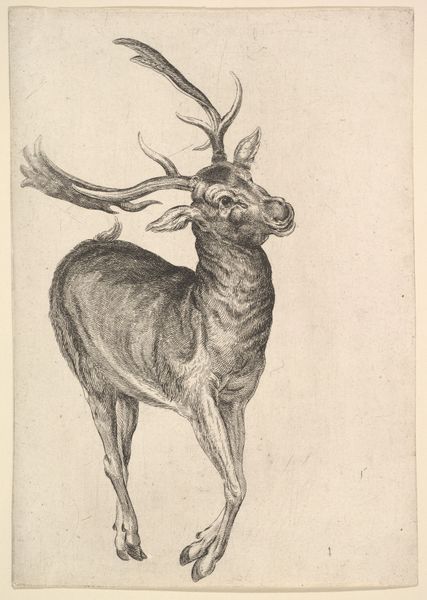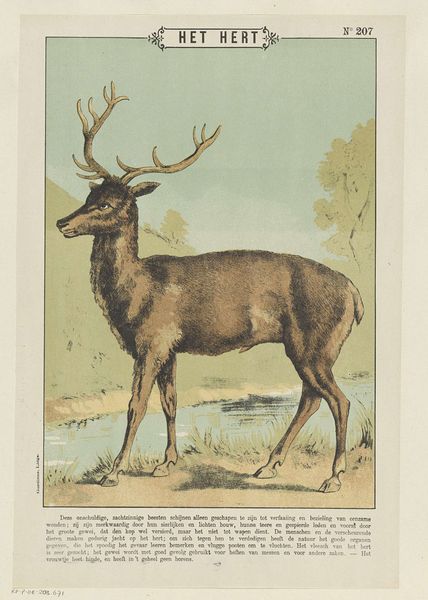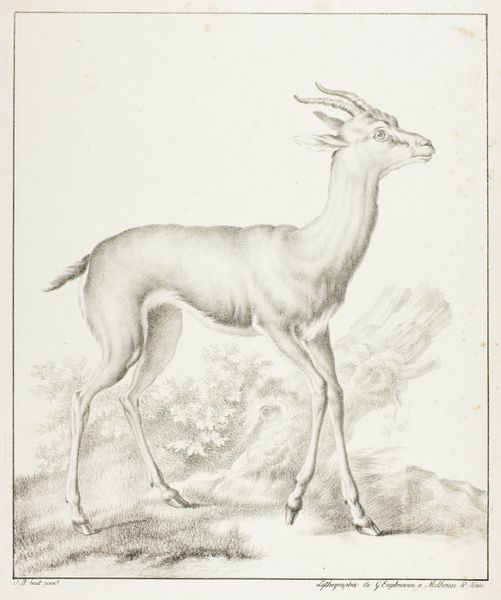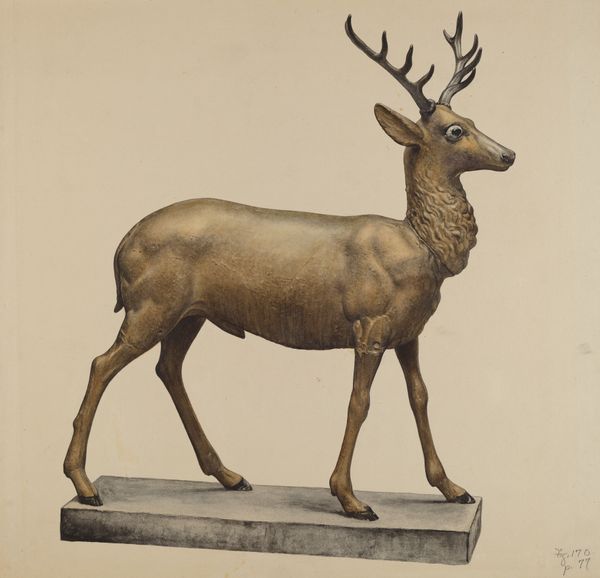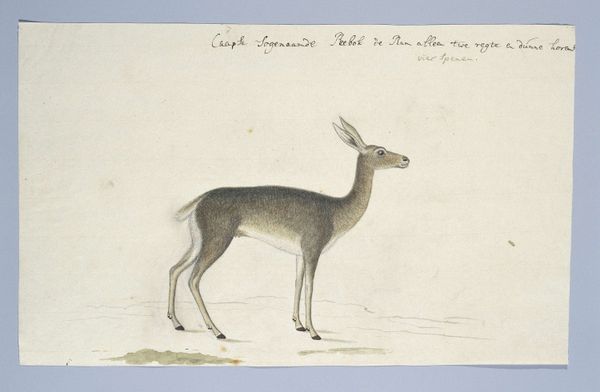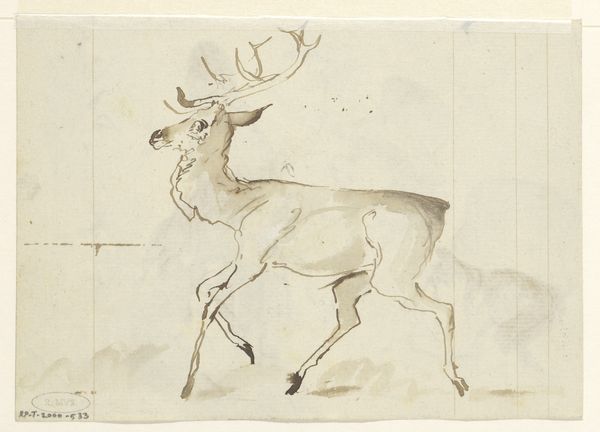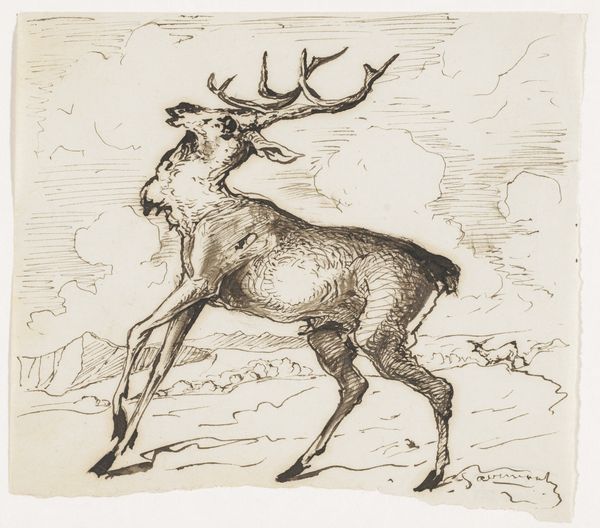
drawing, watercolor
#
drawing
#
watercolor
#
watercolor
Dimensions: overall: 28.8 x 22.2 cm (11 5/16 x 8 3/4 in.)
Copyright: National Gallery of Art: CC0 1.0
Curator: Looking at this watercolor piece titled "Child's Saving Bank (Deer)" by Carl Buergerniss, circa 1940, it immediately strikes me how objects like this reflect values instilled from a young age. What's your take? Editor: It's unassuming, isn’t it? My immediate thought is how the penny adds to the composition: that coppery disc highlighting the surface, really bringing the object and its materiality to the fore. Curator: Absolutely. These child-focused savings tools emerged during a period emphasizing fiscal responsibility. Beyond the object itself, its representation signals something about middle-class aspiration, and the art produced and reproduced from such artifacts. Editor: Yes, there's a craft at play both in the sculpture's fabrication and this image's production with watercolor and drawing. Was this sort of manufactured item typically made of cast iron, do you think? One that was possibly gilded? Curator: That's plausible, given the era and purpose. These weren't just functional; they were designed to appeal aesthetically, encouraging usage. Art's relationship to capitalism, in rendering desirability, can hardly be ignored. Editor: I am curious about Buergerniss’ technique. Notice how the shading describes its form, implying texture, a kind of illusion, to something very real and grounded. It looks quite tactile, as though one might pick up both the toy and coin from the paper. Curator: That tactility makes it inviting, no? Such works in children's literature, educational materials, and even advertisements of the period promoted specific virtues and molded ideal consumers. The art serves a didactic, perhaps even propagandistic, purpose. Editor: Precisely. I can imagine that smooth metallic surface, cool to the touch. Beyond financial literacy, it’s tempting to think of it simply in terms of production: who fashioned this object and what does that labor say about American ingenuity and design from that time? Curator: A crucial point—locating its origins within specific networks of production is a task that speaks to the power of consumerism at this period in history. Well, it certainly reveals layers within what might seem like a simple depiction. Editor: Indeed, bringing it closer to understanding what an era valued and the material processes that reflect those ideals. Something so quotidian, imbued with such rich understanding.
Comments
No comments
Be the first to comment and join the conversation on the ultimate creative platform.
